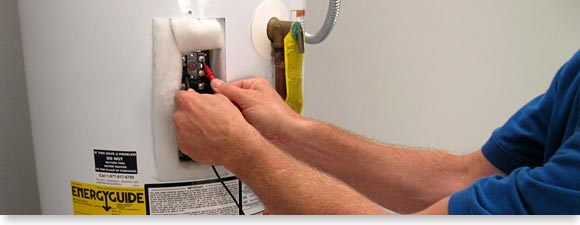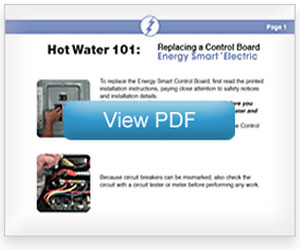Facing issues with your Whirlpool water heater? You’re not alone.
Many homeowners encounter hiccups with their water heaters, which can disrupt daily routines and cause unnecessary stress. But don’t worry; this guide is here to help you troubleshoot common problems with ease. By understanding how your Whirlpool water heater works and knowing what to look for, you can save time, money, and the hassle of cold showers.
Whether it’s a minor glitch or something more serious, you’ll find clear, straightforward solutions that will get your water heater back on track. Ready to dive in and tackle those pesky problems head-on? Let’s get started!
Page Contents
Common Issues
When your Whirlpool water heater starts acting up, it can be a real headache. But don’t worry—most issues are common and can be tackled with some straightforward troubleshooting. Understanding these common problems can save you time and avoid unnecessary repair costs. Let’s dive into some of the frequent issues you might encounter.
No Hot Water
Imagine stepping into a shower expecting warmth, only to be greeted by chilly water. This is a typical problem with water heaters. First, check the power supply. Is it securely plugged in? Check the circuit breaker; it might have tripped. If everything seems fine, the thermostat could be the culprit. A simple reset might fix it.
Inconsistent Temperature
One moment the water is scalding hot, the next it’s lukewarm. This inconsistency can be annoying. Often, it’s due to a malfunctioning thermostat. Consider adjusting it to a stable setting. Mineral buildup can also affect temperature consistency. Regular maintenance and cleaning can help keep things running smoothly.
Water Leaks
Water pooling around your heater is alarming. Leaks can stem from loose connections or a faulty pressure relief valve. Tighten connections to see if that solves the issue. If the leak persists, inspect the valve. Replacing it might be necessary. Regular checks can prevent small leaks from turning into big problems.
Have you ever faced any of these issues? What did you do to fix them? Share your experiences in the comments and help others navigate these common challenges.
Diagnostic Tools
When your Whirlpool water heater starts acting up, having the right diagnostic tools can make troubleshooting much easier. Whether it’s a minor issue or something more complex, these tools will help you pinpoint the problem efficiently. You don’t have to be an expert to use them effectively, just follow these simple tips.
Multimeter Usage
A multimeter is indispensable for checking electrical components of your water heater. It measures voltage, current, and resistance, helping you determine if a faulty thermostat or heating element is the culprit.
Start by setting the multimeter to measure resistance (ohms). Test each component by touching the multimeter probes to the terminals. If the reading is zero or infinite, the component may be defective.
Remember the first time you used a multimeter? It might have seemed daunting, but once you see those numbers, it becomes a game-changer. What electrical issue will you uncover today?
Visual Inspection
Sometimes, the problem is visible to the naked eye. Look for leaks, corrosion, or any physical damage on your water heater. These signs can indicate bigger issues.
Check the fittings and connections. Are they tight and secure? Loose connections can lead to inefficiencies or even safety hazards.
A flashlight can be helpful for spotting hidden issues. Ever found a small leak that saved you from a big repair bill later? Your eyes are powerful diagnostic tools.
Listening For Sounds
Your water heater might be speaking to you. Strange noises often signal a problem. Listen for popping, hissing, or rumbling sounds.
Popping noises can mean sediment buildup, affecting efficiency. Rumbling might indicate a more serious issue inside the tank.
Have you ever heard your water heater make odd sounds and wondered what they mean? Next time, take a moment to listen and investigate. What secrets is your appliance trying to share?
With these diagnostic tools, you can tackle Whirlpool water heater issues confidently. What challenges will you solve today?
Temperature Problems
Temperature problems with your Whirlpool water heater can be frustrating, especially when you’re expecting a hot shower after a long day. These issues might stem from several common causes, and understanding them can make troubleshooting much easier. Let’s dive into some practical solutions to get your water temperature back on track.
Thermostat Adjustment
The thermostat in your water heater controls the temperature. If your water isn’t hot enough or is too hot, adjusting the thermostat might be the solution. Check the thermostat settings; they might have accidentally changed, or perhaps need a fine-tuning.
It’s a straightforward process: locate the thermostat, typically behind a panel, and turn the dial to your desired temperature. Most thermostats have a recommended setting—usually around 120°F. This setting is energy efficient and safe.
If you’re unsure about the adjustment, consult your heater’s manual. Have you ever adjusted a thermostat before? It’s easier than you think, and can make a world of difference in your comfort.
Heating Element Replacement
A faulty heating element can lead to inconsistent water temperatures. If you’ve adjusted the thermostat and still face issues, the heating element might need a replacement.
Begin by checking the element for damage or corrosion. A simple inspection can reveal a lot. If you notice any wear, it’s likely time to replace it. Replacement is usually straightforward but requires some basic tools.
Ever replaced a heating element? It’s a task that might seem daunting, but with a little patience, you can successfully restore your water heater’s functionality and enjoy consistently hot water.
Sediment Buildup
Over time, sediment can accumulate at the bottom of your water heater, affecting its efficiency. This buildup can insulate the water from the heating element, leading to cooler water temperatures.
Regular maintenance, like flushing the tank, can prevent sediment issues. Simply drain a few gallons from the heater until the water runs clear. This can dramatically improve your heater’s performance.
Have you ever flushed your water heater? It’s a simple preventive step that can save you from bigger problems down the line. Why not schedule regular maintenance to keep your heater in top condition?
Tackling these temperature problems not only enhances your comfort but also extends the lifespan of your water heater. Ready to make some adjustments and enjoy a warm, relaxing shower?

Credit: www.whirlpoolwaterheaters.com
Leak Solutions
Fixing issues with Whirlpool water heaters can be straightforward. Identify common problems like leaks or heating issues. Follow clear steps to troubleshoot effectively and ensure your water heater works efficiently.
When dealing with a leaky Whirlpool water heater, you might feel a wave of frustration. Leaks can lead to water damage, high bills, and even safety hazards. Let’s tackle these problems head-on with practical solutions that anyone can apply.Check Connections
Start by inspecting all visible connections around your water heater. Loose fittings or connectors can cause leaks and are often straightforward to fix. Tighten any loose connections with a wrench, but be careful not to overtighten, as this can cause additional damage. Consider the time you accidentally left a faucet dripping all night. That constant flow can create a noticeable impact, much like a leaky water heater. Don’t let a loose connection drain your wallet.Repair Valves
Your water heater has several valves, like the temperature and pressure relief valve, which can be common sources of leaks. If you notice water dripping from the valve, it might need replacement or a simple adjustment. Imagine finding a leak during a busy morning. Instead of panic, pause and check these valves first. A quick fix here could save you from more significant water woes.Tank Replacement
Sometimes, the tank itself may be the culprit. If your water heater is older or has significant rust, a replacement might be the most viable option. A leaking tank often signals internal corrosion, which can’t be repaired. Think about how you maintain your car. When parts wear out, replacement is often necessary to ensure safety and efficiency. Your water heater deserves the same attention to keep your home safe and comfortable. Have you ever faced a persistent leak? How did you handle it? Share your experiences and solutions in the comments below. Your insights could help others facing the same challenges.Maintenance Tips
Proper maintenance extends the life of your Whirlpool water heater. It ensures smooth operation and prevents unexpected issues. Simple regular care keeps your heater efficient. Save on energy bills and avoid costly repairs with these tips.
Regular Cleaning
Cleaning your water heater removes sediment buildup. Sediments reduce efficiency and can cause damage. Drain the tank every six months. Flush out the sediments using water pressure. This simple task keeps your heater running smoothly.
Annual Inspection
Inspect your water heater once a year. Check for leaks, rust, and any wear. Examine the pressure relief valve for proper function. A thorough annual inspection prevents potential problems. Ensure all parts are in good condition.
Preventive Measures
Preventive measures protect your water heater from future issues. Insulate the heater and pipes to save energy. Set the thermostat to 120 degrees Fahrenheit. This prevents overheating and saves power. Install a water softener if hard water is present. It reduces mineral deposits and extends heater life.

Credit: sea-adventure.es
Professional Help
Whirlpool water heaters are known for their reliability. Yet, even the best appliances sometimes face issues. Troubleshooting can be complex. That’s when professional assistance becomes vital. Experts have the skills to diagnose and fix problems quickly. Hiring a qualified technician ensures safety and efficiency. Let’s explore when to seek expert help and how to choose the right technician.
When To Call An Expert
Some problems need professional attention. If there’s no hot water, call an expert. Strange noises often indicate serious issues. Leaks are another sign to contact a technician. If the heater keeps tripping the breaker, it’s time for a professional. These are signs of deeper issues that need expert care. Professionals have the tools to handle complex problems.
Choosing The Right Technician
Selecting a skilled technician is important. Check their certifications and experience. A well-trained expert ensures quality service. Read customer reviews to gauge their reliability. Ask friends for recommendations. Compare service costs. Ensure they offer a warranty for repairs. This protects your investment. A good technician provides peace of mind and effective solutions.

Credit: www.whirlpoolwaterheaters.com
Frequently Asked Questions
How Do You Reset A Whirlpool Water Heater?
To reset a Whirlpool water heater, first turn off the power supply. Then, press the reset button located near the thermostat. Ensure the heater is cool before resetting. Finally, turn the power back on and wait for the heater to resume normal operation.
Always consult the user manual for specific instructions.
What Is The Most Common Problem With Water Heaters?
The most common problem with water heaters is sediment buildup. This reduces efficiency and causes overheating. Regular maintenance, like flushing the tank, can prevent these issues. If not addressed, sediment can damage the heating element, leading to costly repairs or replacements.
Why Is My Whirlpool Hot Water Heater Not Working?
Check the power supply, thermostat settings, and heating elements. Inspect for leaks or faulty connections. Reset the circuit breaker. If issues persist, consult a professional for further diagnosis and repair. Regular maintenance can prevent future problems with your Whirlpool hot water heater.
What Is The First Thing To Check When There Is No Hot Water?
Check the water heater’s power supply first. Ensure the circuit breaker is on, and the unit is plugged in.
Conclusion
Troubleshooting your Whirlpool water heater can save time and stress. Knowing common issues helps in quick fixes. Regular maintenance prevents problems and extends the heater’s life. Check connections, thermostat, and power supply often. Use the manual for detailed guidance. Contact professionals for complex issues.
Always prioritize safety while handling electrical components. Remember, a well-functioning water heater enhances comfort at home. Keeping it in top shape ensures consistent hot water flow. Stay proactive with regular checks and enjoy warm showers every day.
